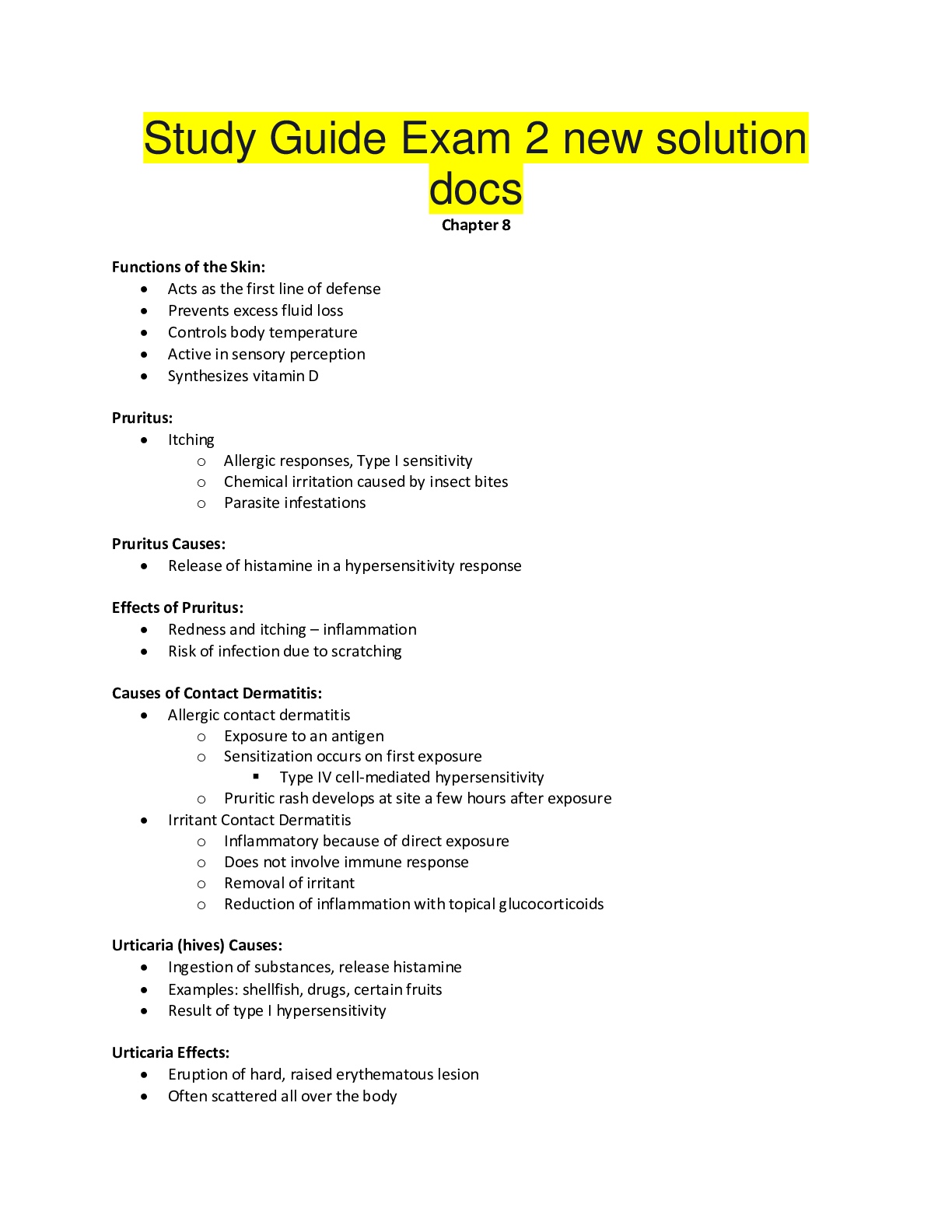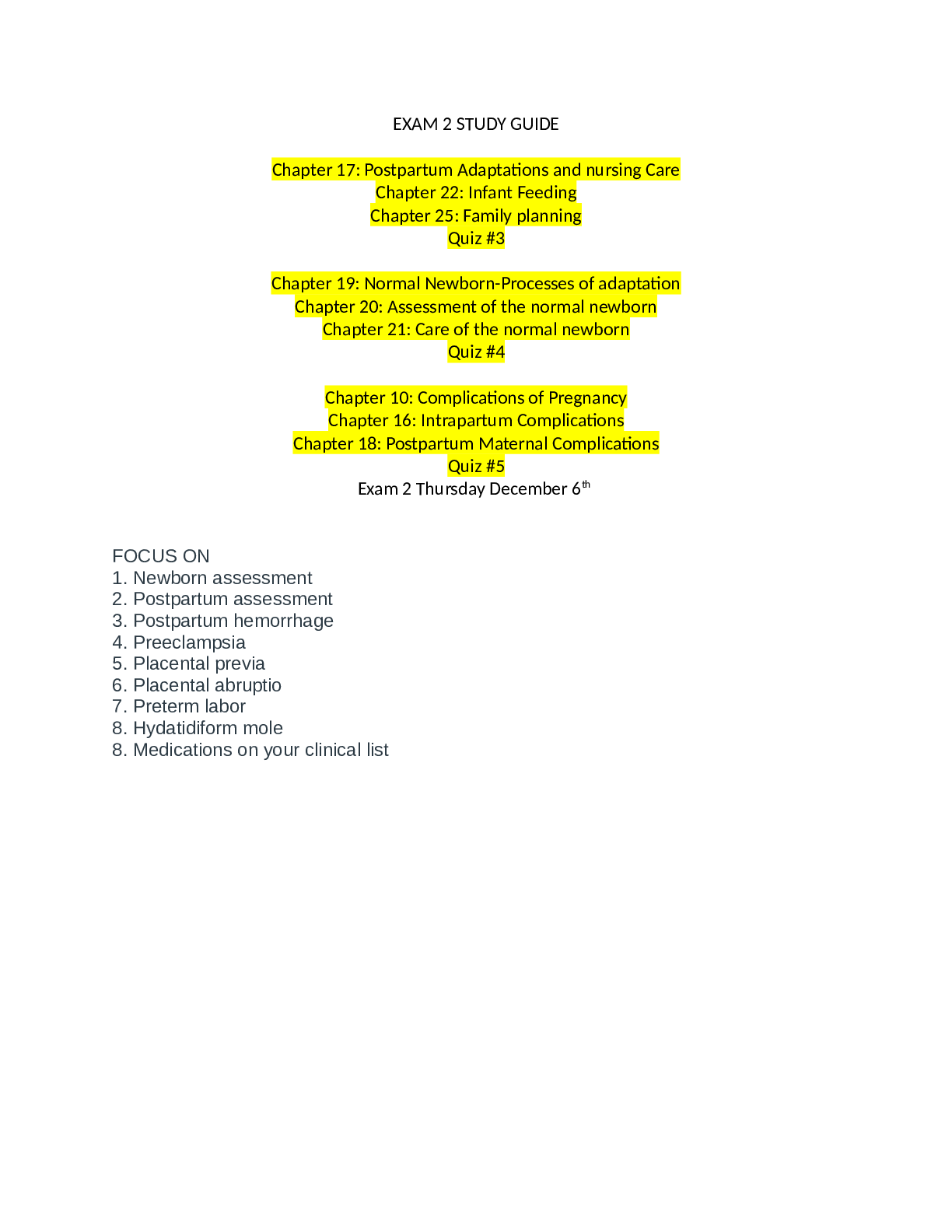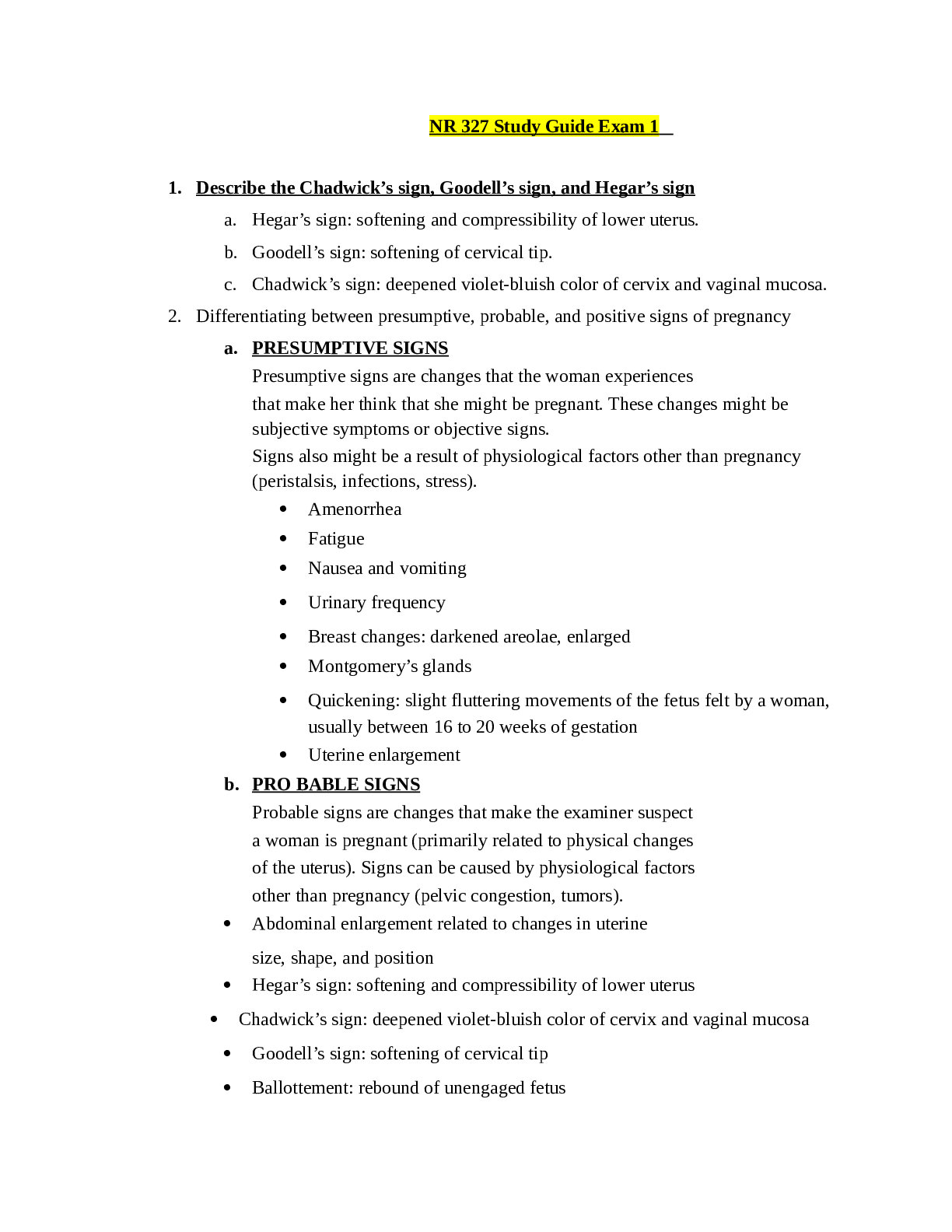*NURSING > STUDY GUIDE > Health assessment study guide Exam 1 (All)
Health assessment study guide Exam 1
Document Content and Description Below
Health assessment study guide Exam 1 Subjective vs objective data Subjective/symptom - What patient says about themselves Objective/sign – observed when inspecting, percussing, palpating and aus... cultating patient during physical exam Diagnostic reasoning Attend to initially available cues Formulate diagnostic hypotheses Gather data relative to tentative hypotheses Evaluate each hypothesis with new data collect to arrive at final diagnosis Nursing process ADOPIE Assessment, diagnosis, outcome identification, planning, implementation and evaluation Critical thinking skills Identifying assumptions, organized approach, validation, normal and abnormal, inferences or drawing valid conclusions, clustering related cues, relevance, inconsistencies, identify patters, missing information, health promotion, risk diagnosis, set priorities, collaborative problems, outcomes, interventions, evaluation and corrective thinking, comprehensive plan of care. 4 types of data collecting Episodic or problem centered data base Follow up data base Emergency data base Complete and total health data base Health and illness Health is a balance of a person is a complex interlaced phenomenon, within physical, mental and spiritual nature Illness is a loss of that person’s balance Difference between culture, norms, social learning, religion, ethnicity and spirituality. Cross culture model of health care is a holistic model. Hot and cold theory of illness vs yin/yang theory. Naturalistic – forces of nature must be kept in balance. Yin and yang, hot and cold. Transcultural expression of pain. Pain has been found to be a highly personal experience, depending on cultural learning, the meaning of the situation and other factors unique to the person. Purpose of health history Biographical data Source of history Reason for seeking care Present health or history of present illness Past health Family health Review of systems Function assessment including activities of daily living (ADL) PQRSTU Provocative or palliative Quality or quantity Region or radiation Severity scale 1-10 Timing or onset Understand patient’s perception of problem Purpose of the CAGE test Cut, annoyed, guilty and eye opener 4 questions in regards to alcohol addiction Purpose of functional assessment Self-esteem, self-concept Activity and exercise Sleep and rest Nutrition and elimination Interpersonal relationships Coping and stress management Personal habits [Show More]
Last updated: 2 years ago
Preview 1 out of 8 pages

Buy this document to get the full access instantly
Instant Download Access after purchase
Buy NowInstant download
We Accept:

Reviews( 0 )
$12.00
Can't find what you want? Try our AI powered Search
Document information
Connected school, study & course
About the document
Uploaded On
Mar 18, 2021
Number of pages
8
Written in
Additional information
This document has been written for:
Uploaded
Mar 18, 2021
Downloads
0
Views
142


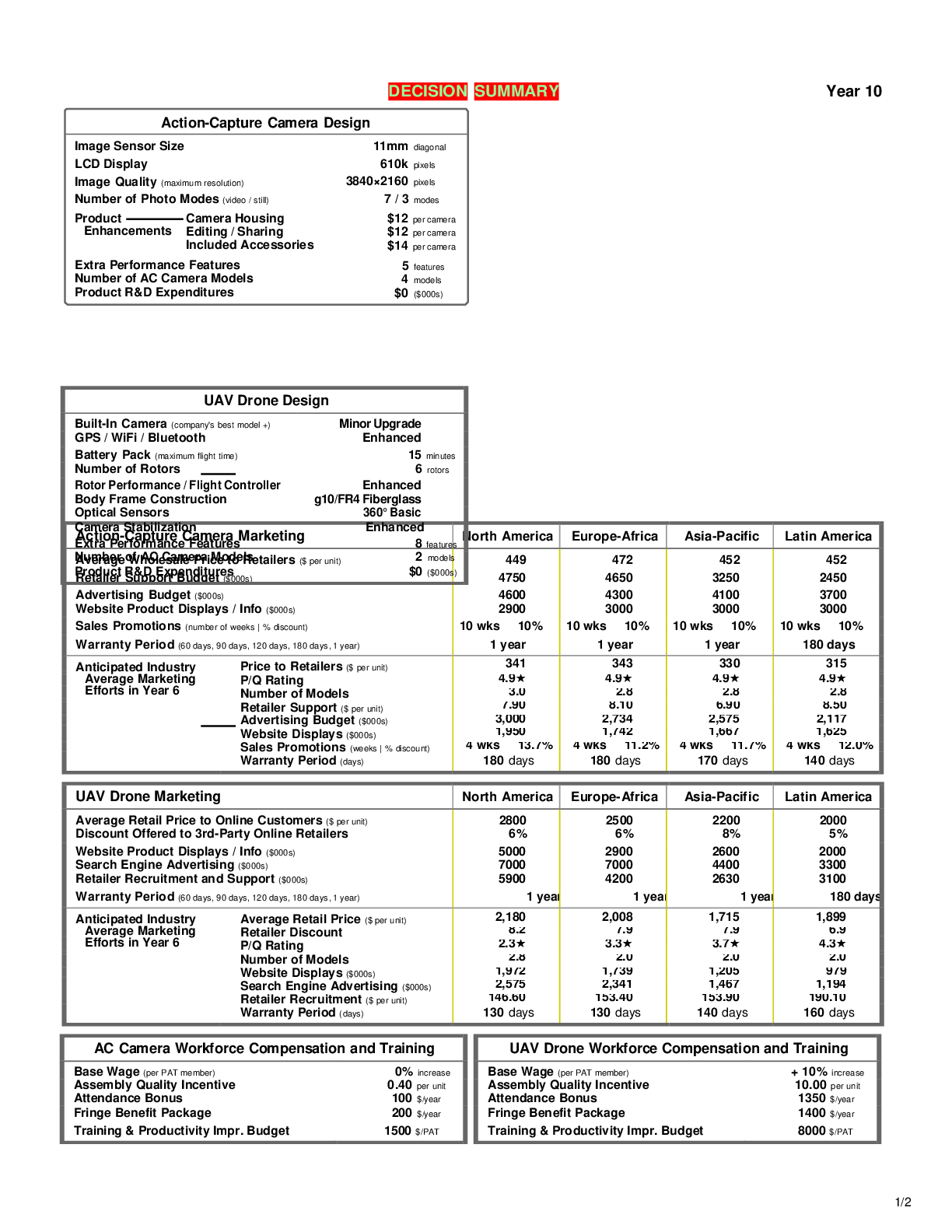
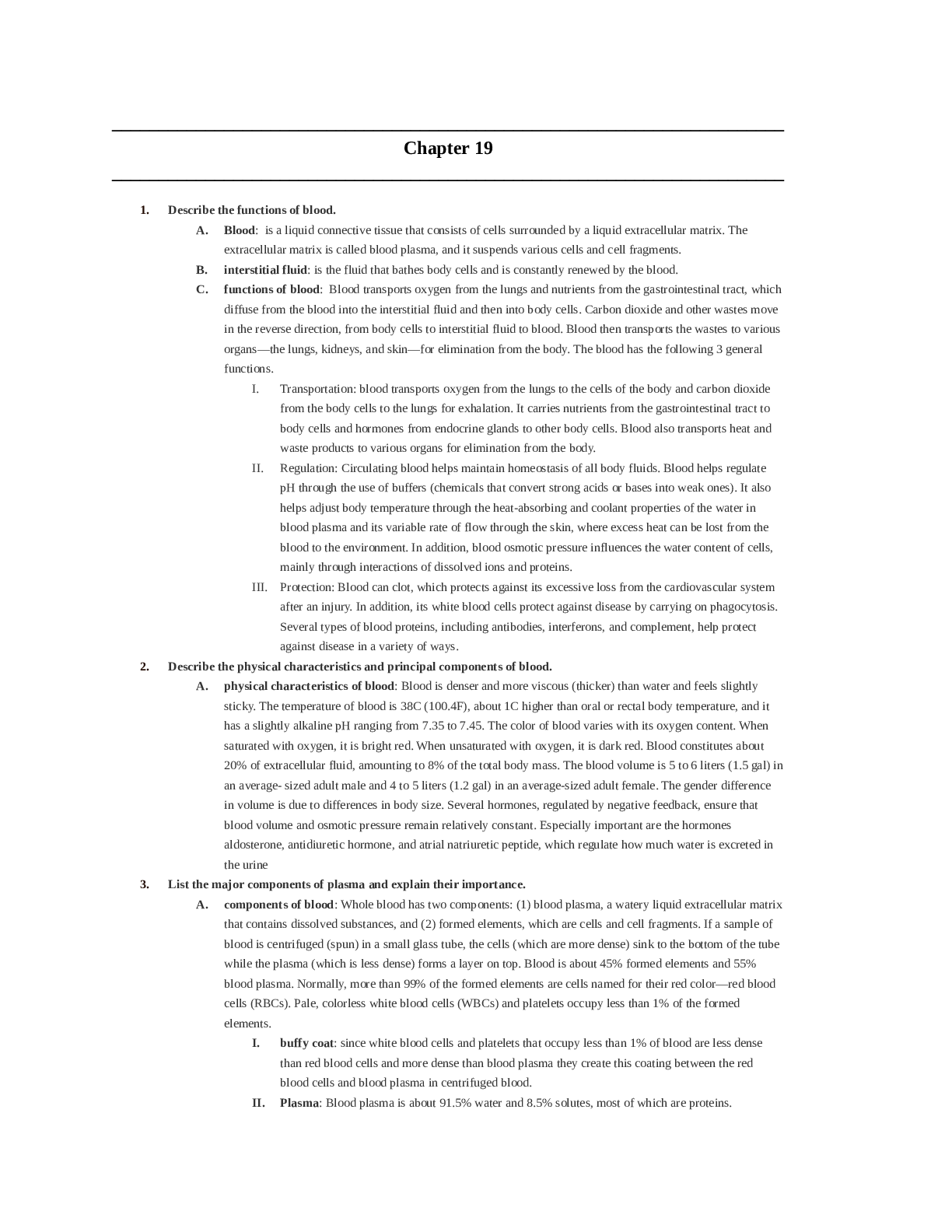


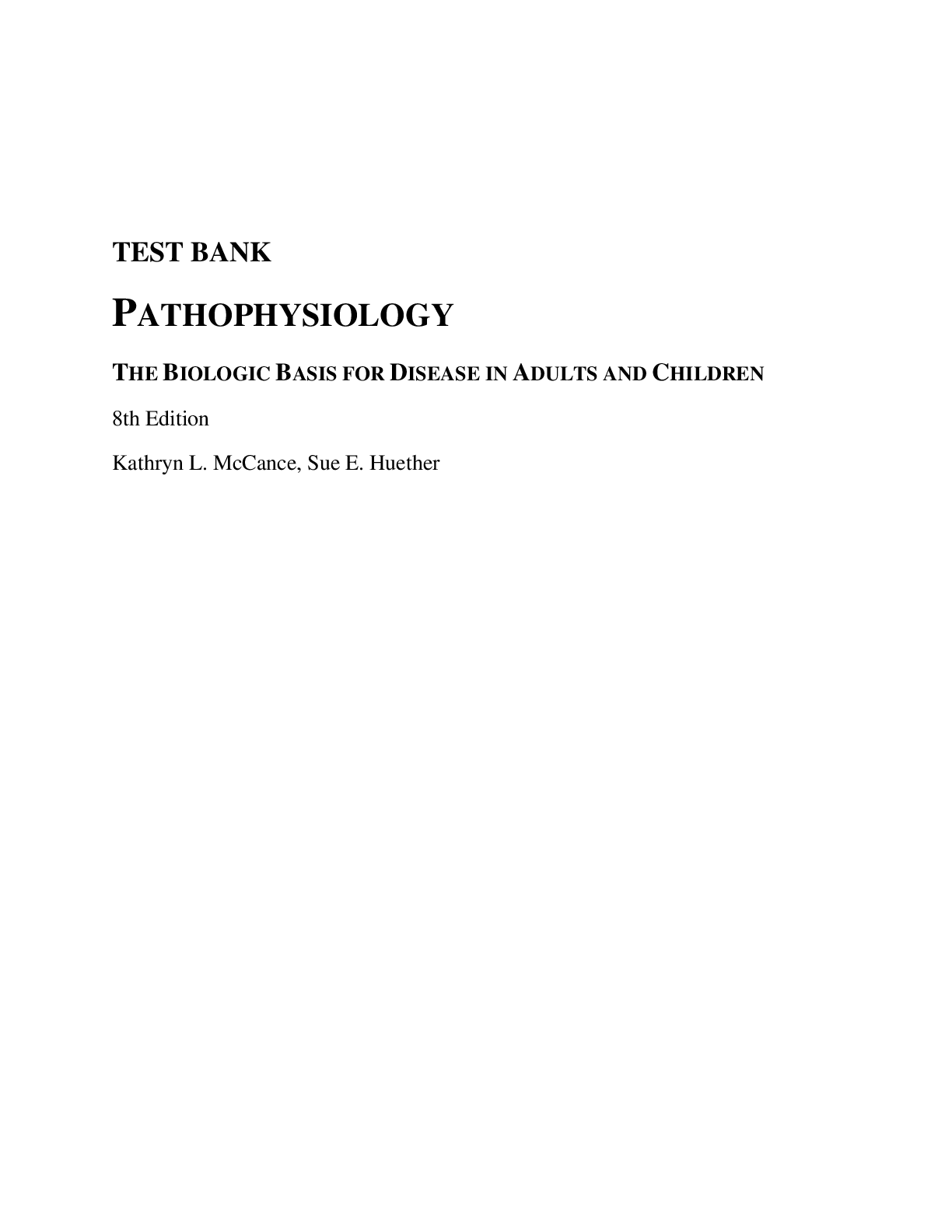
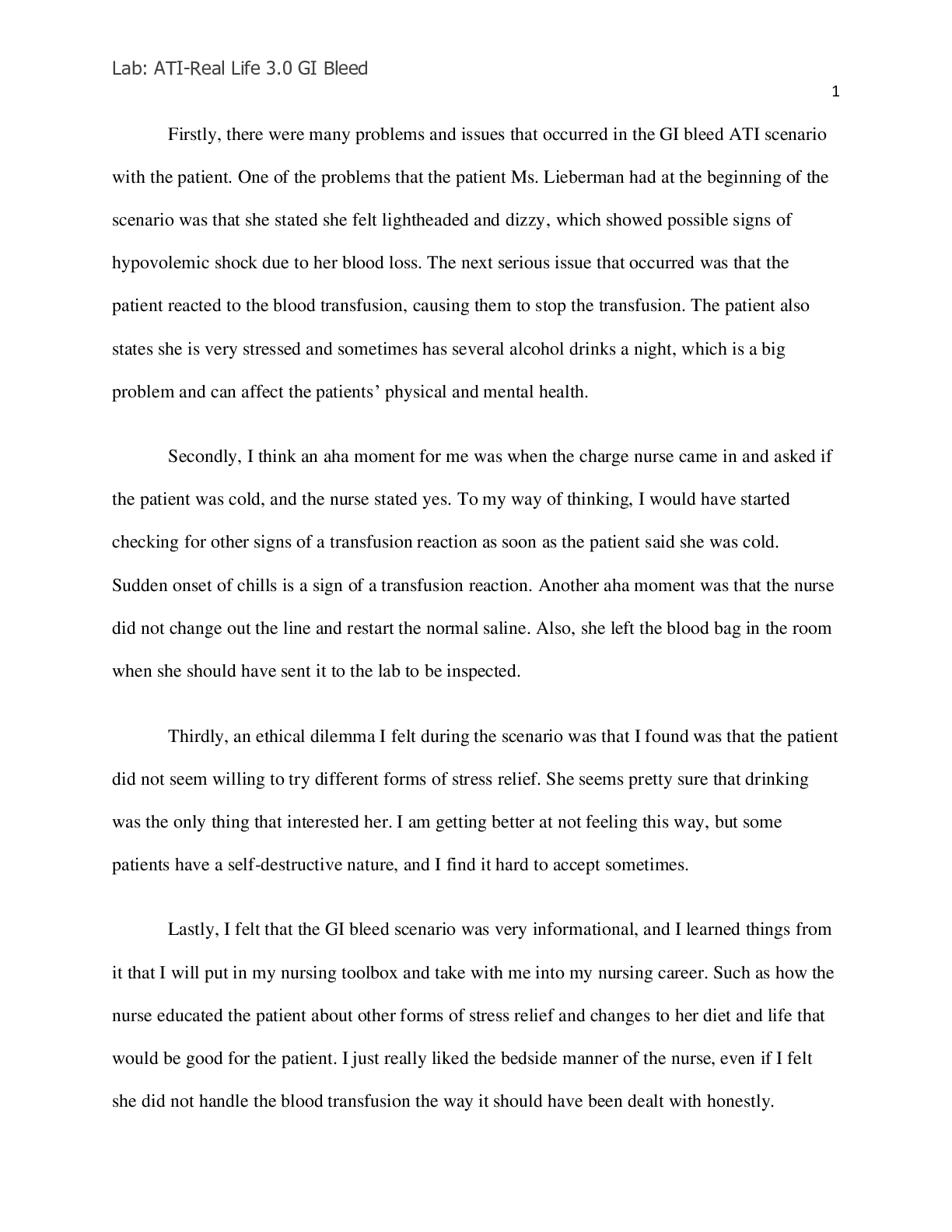
.png)
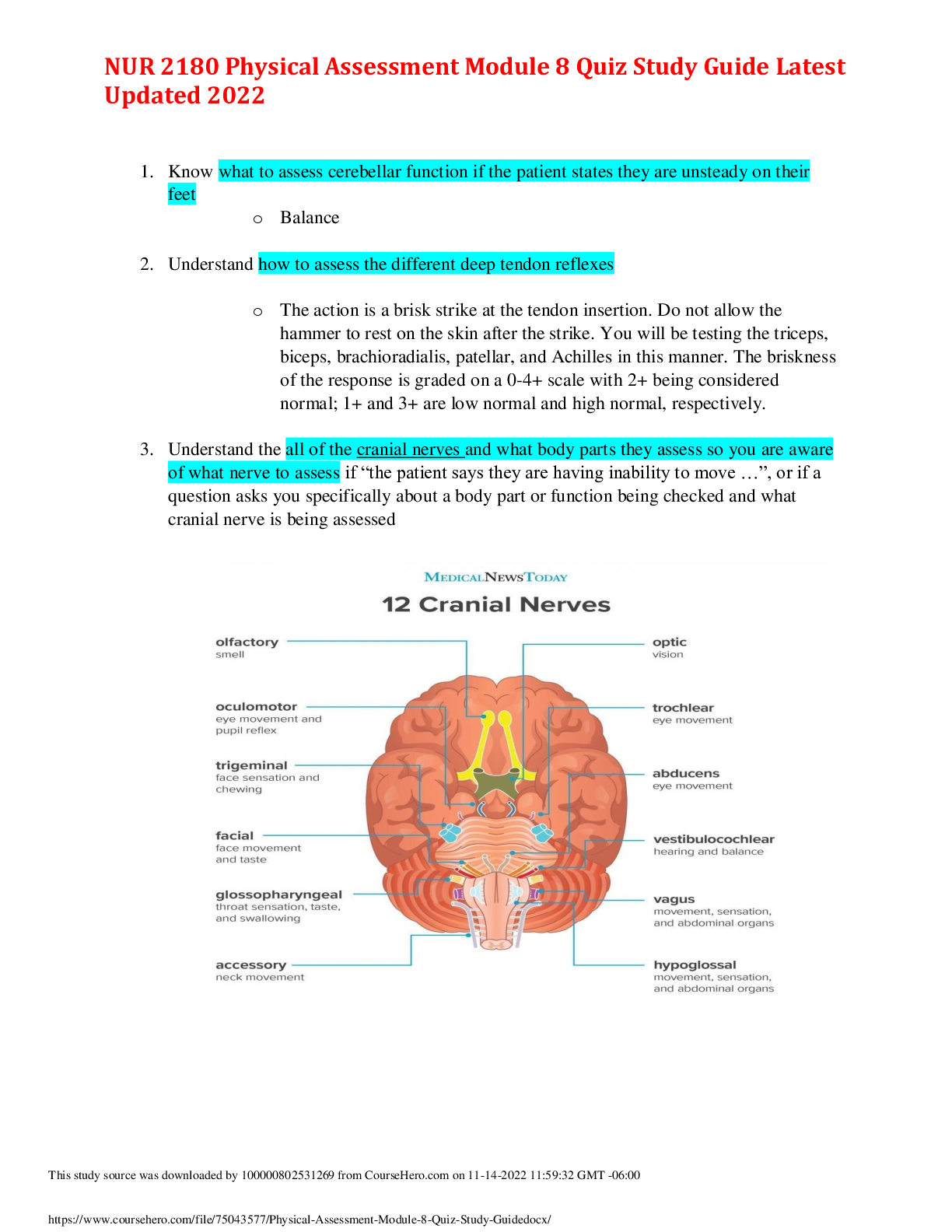
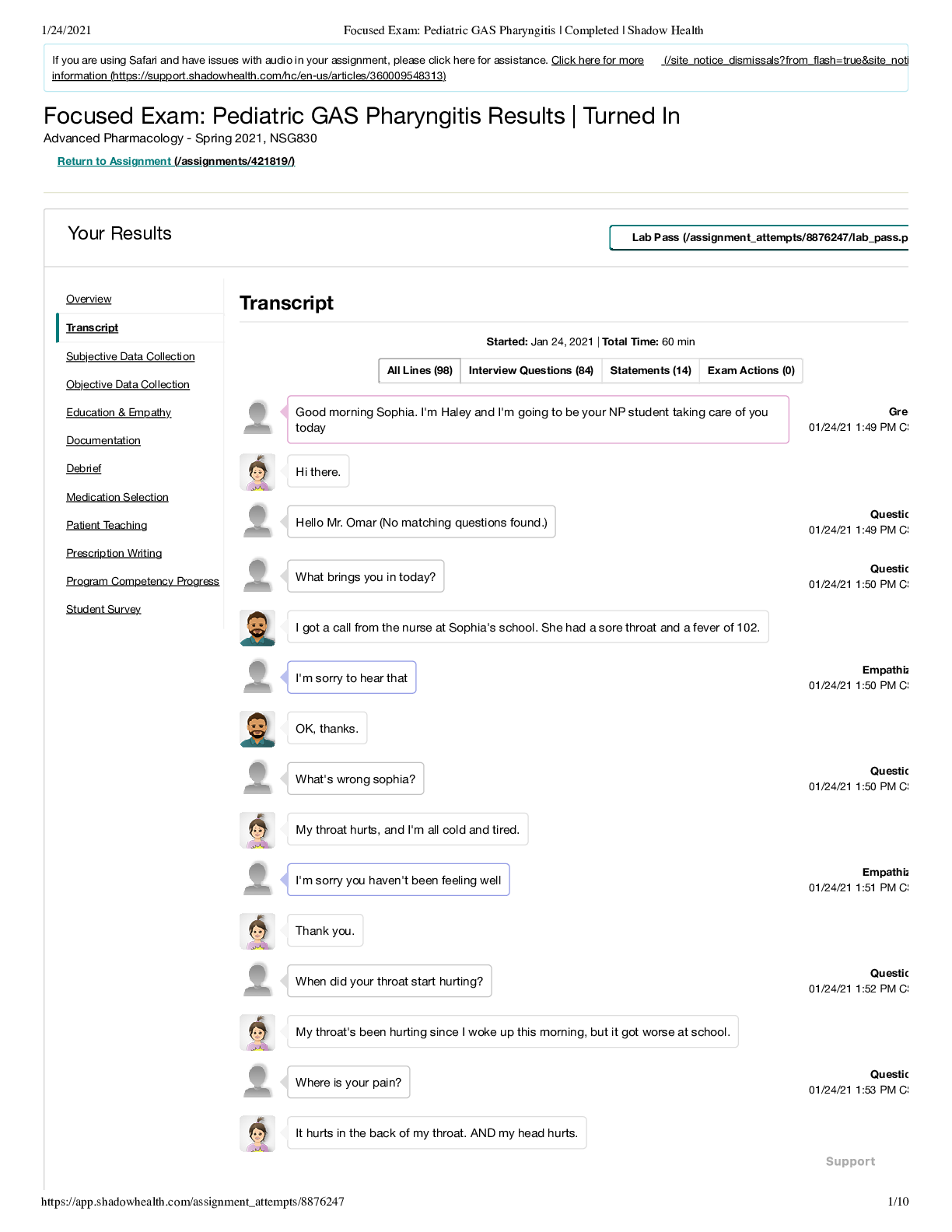



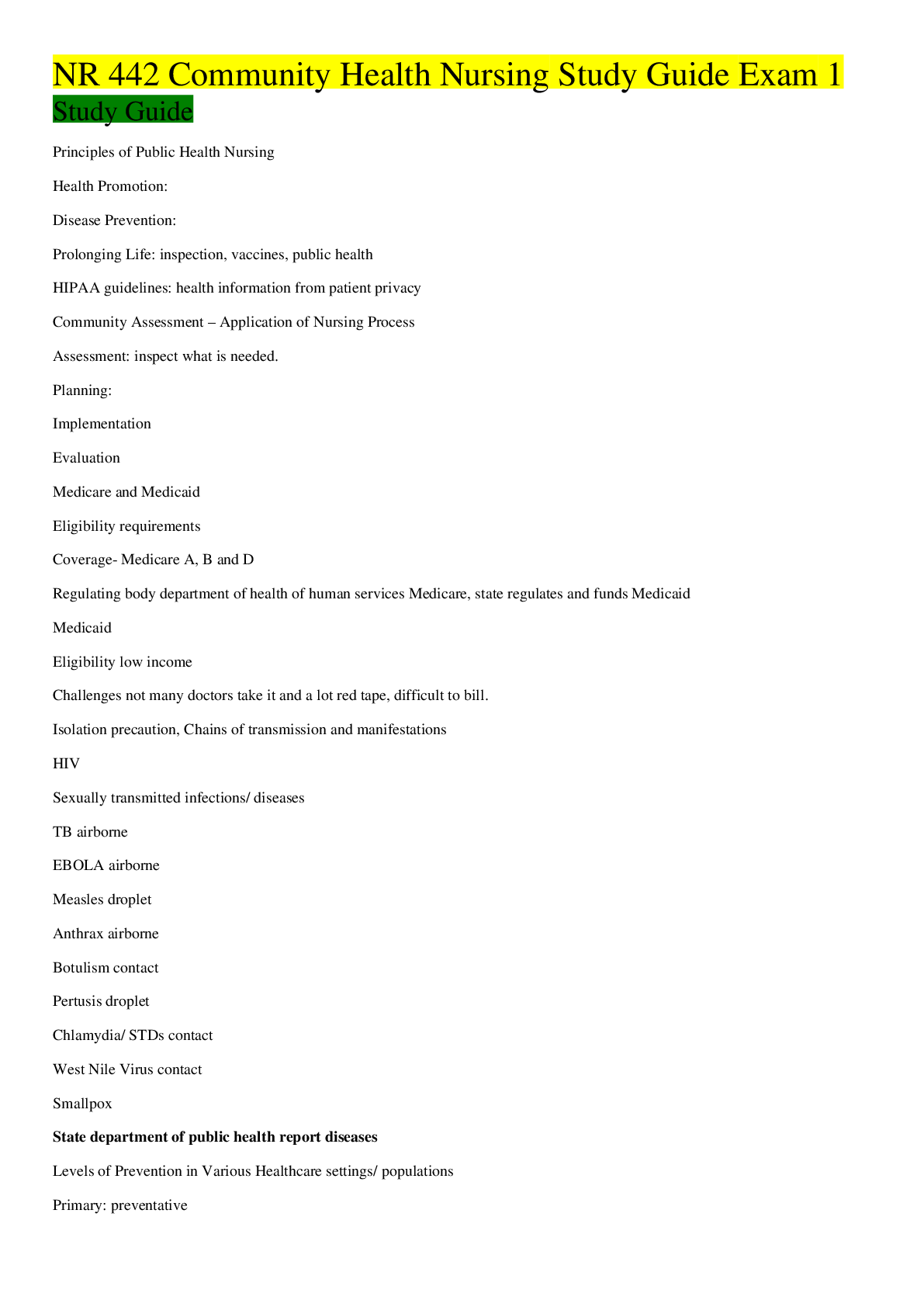
.png)
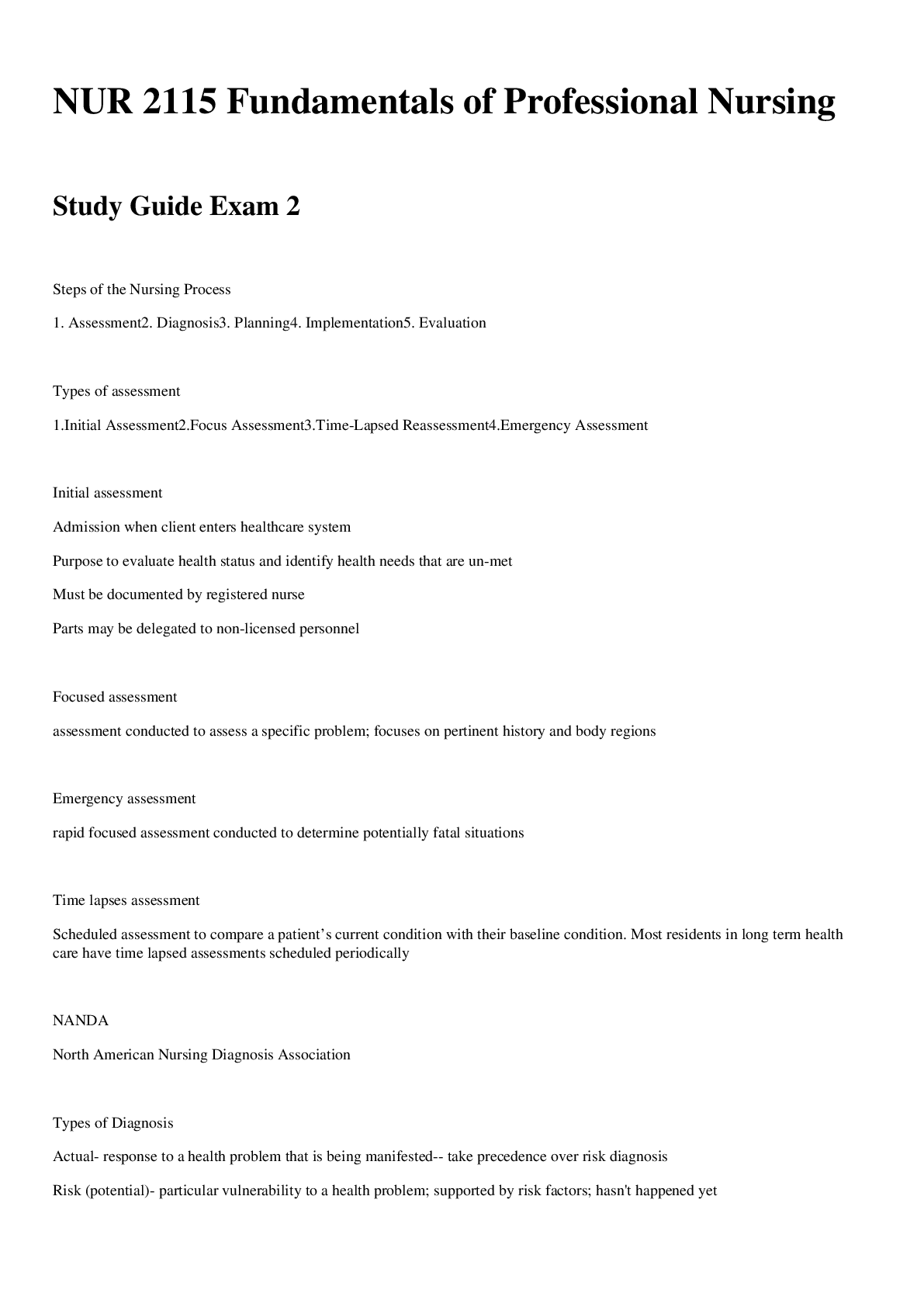
.png)
